
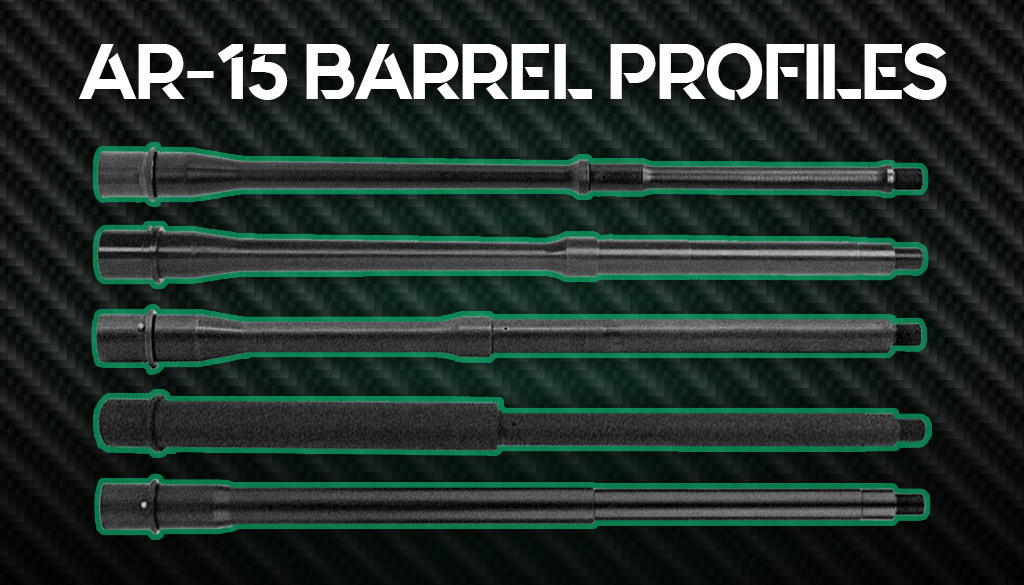
Many believe the barrel is the heart of a firearm. Maybe that’s why the various AR-15 barrel profiles are so close to the hearts of many gun owners. Shooters carry strong feelings on this topic, so we’ll walk through them carefully, talking about AR barrel histories, profile variations, and the latest styles.
In these modern times, the AR-15 is among the most popular firearms worldwide. While many may think of the AR-15 as a new weapon, it’s been around since the late 1950s, and the barrels on this iconic rifle have undergone about as many changes as the gun itself. So let’s talk about the origin of the AR-15 barrel profile, why changes were made, and what type of profile is best for you.
How Barrel Profile Impacts Shooting
Your barrel’s profile is essentially the thickness of that barrel. You can find a bunch of different profiles out there for your AR-15s. Generally, thinner barrels are lighter. That’s great if you’re a hunter and you need to haul your AR-15 through the woods. You can also maneuver with thinner profile barrels more easily.
If you worry about recoil, you might opt for a thicker barrel profile. They help weigh down the gun for more stability; they can also sometimes withstand heavy mag dumps better than thin barrels. Military style shooters who fire rapidly may also prefer a heavy barrel. The heavier profile can help absorb heat and prevent the reliability issues that come up with an overheated barrel.
A History of AR-15 Barrels
The man leading the invention of the AR-15, Eugene Stoner, made strides in establishing the foundation of modern AR barrels. The first barrel on the AR-15 was made for the M16A1 — the pencil barrel.
The story goes that the military thought the barrels were “bending” under the stress of drills and off-label prying tasks. This prompted the updated “government barrel,” which has some extra stock on the muzzle end to prevent warping.
Later, some people discovered that the barrels probably weren’t bending. Instead, there was a debris buildup at the point of the gas block, called a “bent barrel.” There’s some variance of opinion on this, as the earlier pencil barrels are generally regarded as being of lower quality than today’s pencil barrels. Regardless, these earlier flubs (imagined or not) with the AR-15 barrel sparked the evolution of future profiles.
Let’s talk more about the specific barrel profiles on the AR-15 and their purposes.
The Most Notable AR-15 Barrel Profiles
In the next few sections, we’ll review some of the most common barrel profiles on the AR-15. Keep in mind that, in this guide, we’re talking specifically about the barrel profile. If you’re curious about barrel twist rate, best barrel length, or steel type, you can browse some other articles on our site. We’ve also listed some barrel diameters below for reference. These are all taken from the base (thickest part) of the barrel and may differ depending on the manufacturer.
Here are some of the most common AR-15 barrel profiles:
- The Pencil Barrel
- The Government Barrel (And the M4 Barrel)
- The SOCOM Barrel
- The HBAR Barrel
- The Bull Barrel
Now for some details.
The Pencil Barrel For The AR-15
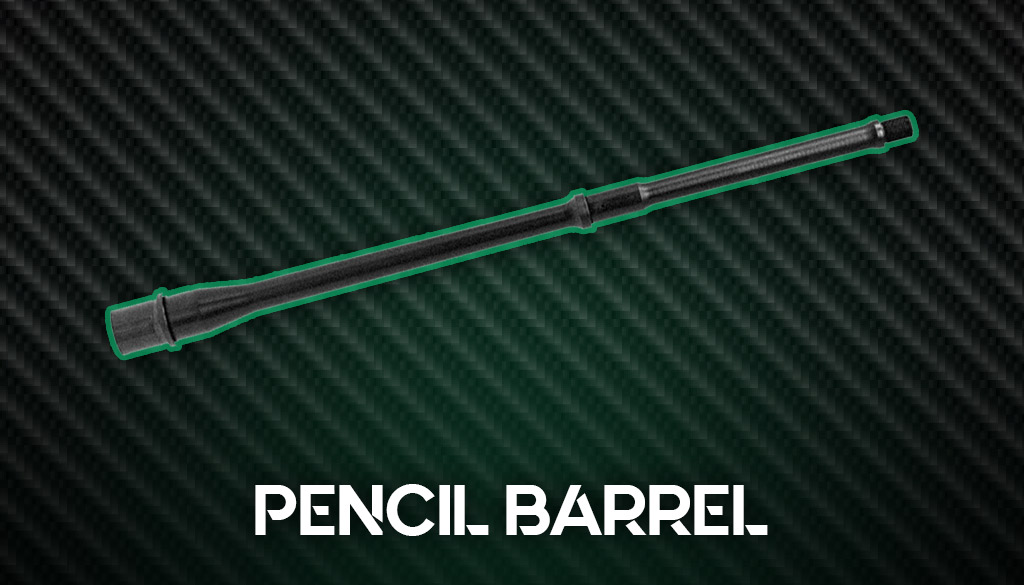
Lightweight, accurate, and reliable. The AR-15 pencil barrel is the most practical option for most shooters.
The pencil barrel (.625” in diameter) was the original profile for the AR-15 and M16A1. However, as we mentioned in the history section, engineers thought this initial design warped under stress. When engineers dropped a gauge through the barrel, it would become hung up around the gas block, and they concluded the barrels had bent (later, it turned out that it was probably residue buildup at the gas port).
While barrels may or may not have been “warping” back in the 1960s, you can be sure that modern pencil barrels are widely used. They are light, agile, and plenty durable. Some people believe that, particularly for civilian use, the pencil barrel is the most practical option. Eugene Stoner intended the AR-15 to be lightweight, and the pencil barrel upholds this principle.
Let’s talk about the profile that “replaced” the pencil barrel.
Government & M4 Barrel
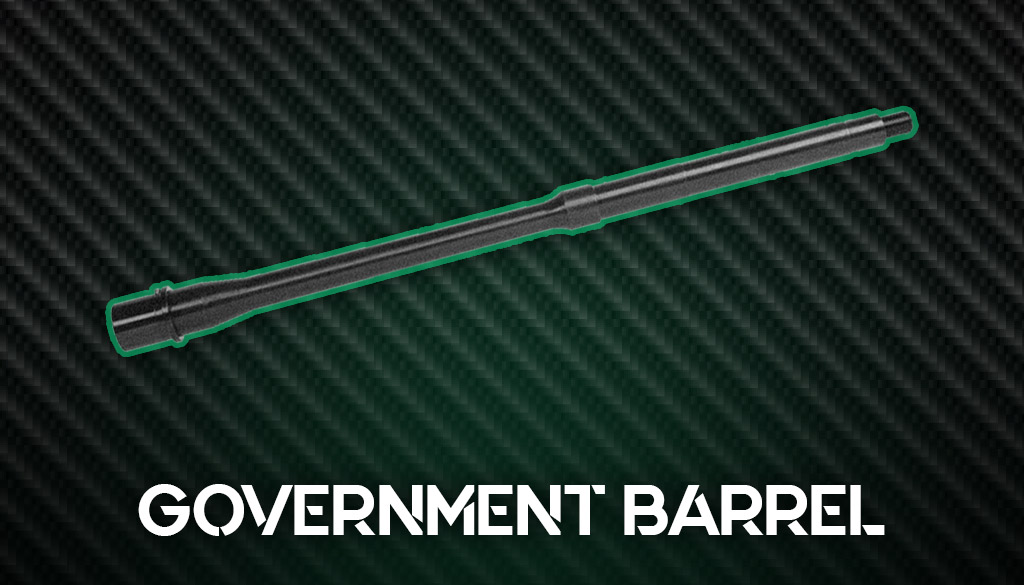
The Government barrel is slightly thicker than the Pencil barrel in key areas for reinforcement.
The government barrel (.675” in diameter) has thicker stock on the front of the barrel, making the rifle somewhat forward balanced. The extra thickness is to add reinforcement and rigidity, as the military believed barrels were warping in this area.
However, regardless of bent barrels, the extra weight at the front did help manage the firearm while shooting, and these barrels remain widely used today. A variant of the government is the M4 barrel. The main difference is that the M4 has a slot where a soldier can attach an M203 grenade launcher.
AR-15 SOCOM Barrel

The SOCOM barrel became a popular profile on the Colt M4A1 rifle for military operations.
This barrel resembles the M4 but has more meat near the chamber end. Many people call this a “midway or medium” barrel, where the HBAR and the bull barrels are “heavy” barrels, and the government and the pencil barrels are “light” barrels.
The SOCOM barrel (.750” in diameter) retains the slot for the grenade launcher, and its design is well-suited for high rates of fire. Those firing their weapons at full-auto rates might consider the SOCOM.
HBAR Barrel
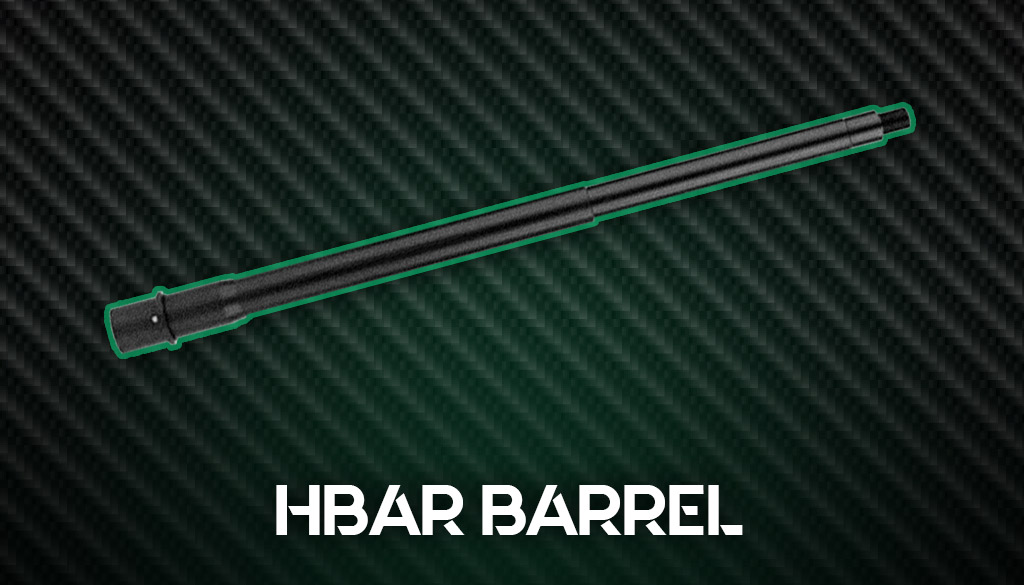
The HBAR barrel profile gives you most of the performance of a Bull barrel, with less weight.
“HBAR” is an acronym that means “heavy barrel,” so it’s no surprise that these are thicker and heavier. The HBAR (.750” in diameter) doesn’t have the raw mass of the bull barrel, but it still has plenty of heft. This design helps dissipate the heat around the chamber side of the barrel, which theoretically improves accuracy under some circumstances.
The thickness does lend itself to fast rates of fire. However, it’s a lot of weight to heft around if you’re on the move, and for those who don’t plan on regularly using full-auto, it’s unlikely that you’ll notice a big difference in accuracy between an HBAR and a lighter barrel.
AR-15 Bull Barrel
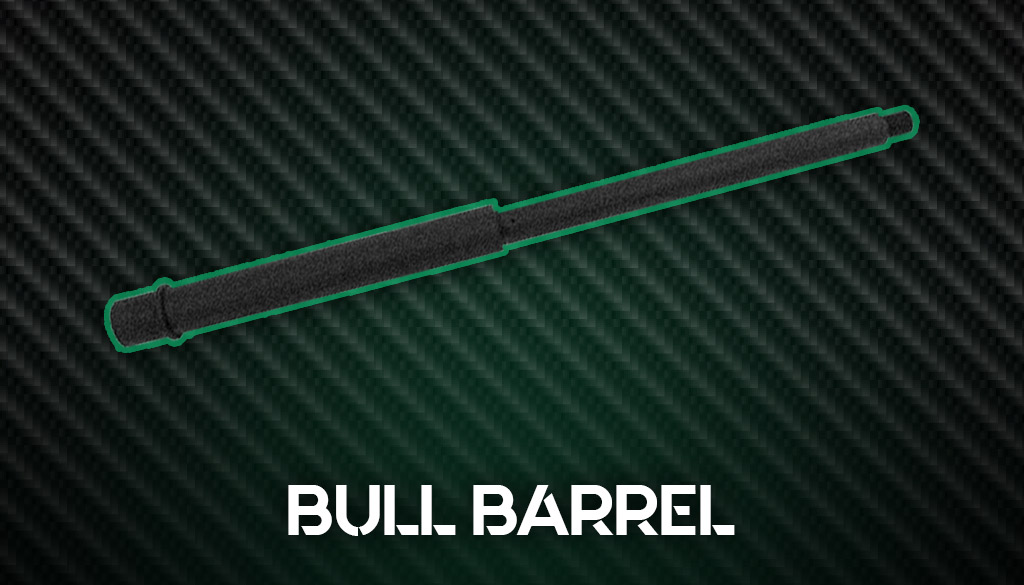
The Bull barrel is known for its toughness, accuracy, and extra weight. It’s a thick boy.
Now we’re talking about the bigger barrels. The bull barrel (.936” in diameter) embodies its name: a big, heavy, tough barrel that has never heard of a gunsmith’s lathe. When would you use such a tank of a barrel?
First, if you’re hunting varmint on private land, you might find the extra weight, and beef gives you long-range accuracy and helps eat up any recoil. Second, if you are shooting in a competition where speed of movement isn’t a huge factor, then a bull barrel might be suitable.
Finally, the large barrel can help prevent overheating and improve accuracy if you’re firing a full-automatic weapon. Besides those applications, the bull barrel means a lot of extra weight.
Several Proprietary AR-15 Barrel Profiles

There are many different proprietary barrel iterations, some of the most popular include: Fluting, Countouring, Carbon Fiber, and Dimpling.
Let’s go over several common proprietary iterations of the AR-15 barrel profile. Some of these barrels are often reserved for special situations (competitions), while others are optional alterations based on personal preference.
Here are four common variants of the AR-15 barrel profile:
- Fluted Barrels: Fluted barrels have grooves strategically machined into the barrel to remove weight without compromising strength. The flutes remove weight but help the barrel maintain accuracy by retaining the rigidity of a much thicker barrel.
- Contoured Barrels: Most times, the M4 is contoured at the beginning of the barrel – this is to reduce weight. The contour is similar to flutes in that it removes “unneeded” material while keeping the barrel strong.
- Carbon Fiber Barrel: In this iteration, the barrel remains steel on the inside but has carbon fiber wrapped around the length of the barrel to maintain strength but significantly reduce weight.
- Dimpled Barrel: This barrel is similar to a fluted barrel in that many small dimples are drilled into the barrel’s exterior to remove weight. Don’t confuse this with “dimpling” the barrel for the gas block screw.
Now that you understand the AR-15 barrels and their different profiles, let’s wrap this up by discussing the most critical question: which barrel profile is right for you?
Which AR-15 Barrel Profile Is The Best?

FF
For most of us, the AR-15 pencil profile barrel will do the job just fine. Modern heat treats make pencil barrels tough, accurate, and lightweight. The name “pencil” probably radiates the wrong message to new gun owners. You can snap a pencil with your bare hands, which is far from the case with strong AR-15 pencil barrels. In terms of usability, and practicality, they are hard to beat.
There are instances where a heavy barrel might suit your needs. However, you may want to ensure that you’ve trained with multiple AR barrel profiles first. For example, a SOCOM barrel might serve those well who know they’ll be cycling a lot of rounds. There is a passionate group of firearm users who are skeptical of ever using an HBAR or bull barrel, so be sure there’s a good reason you want to sport a “heavy” barrel before purchasing.
For more about ARs, check out our guide to the difference between direct impingement and piston-driven AR-15s.


